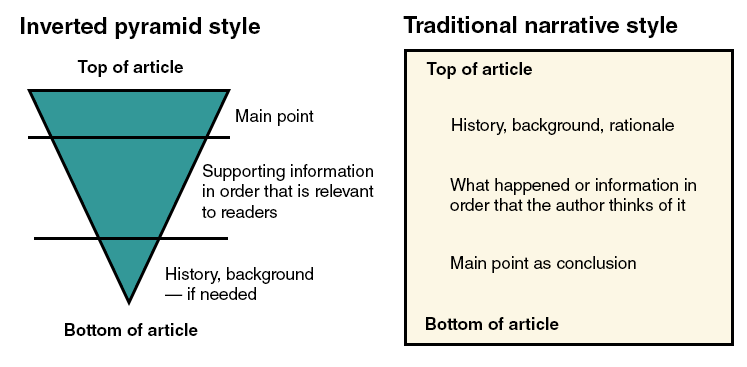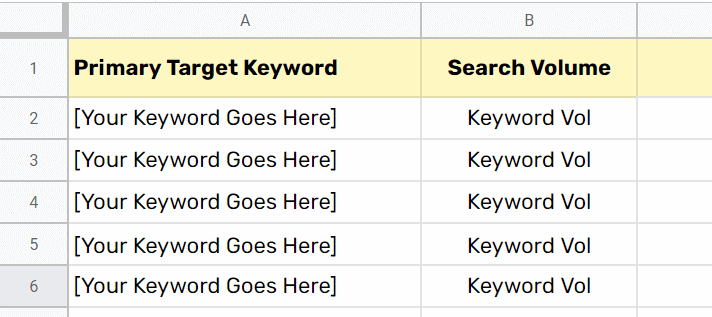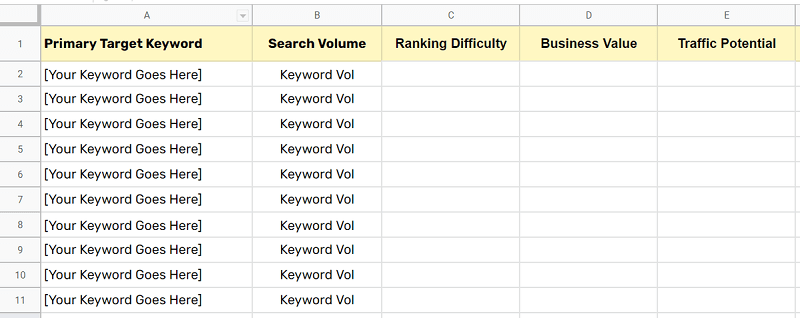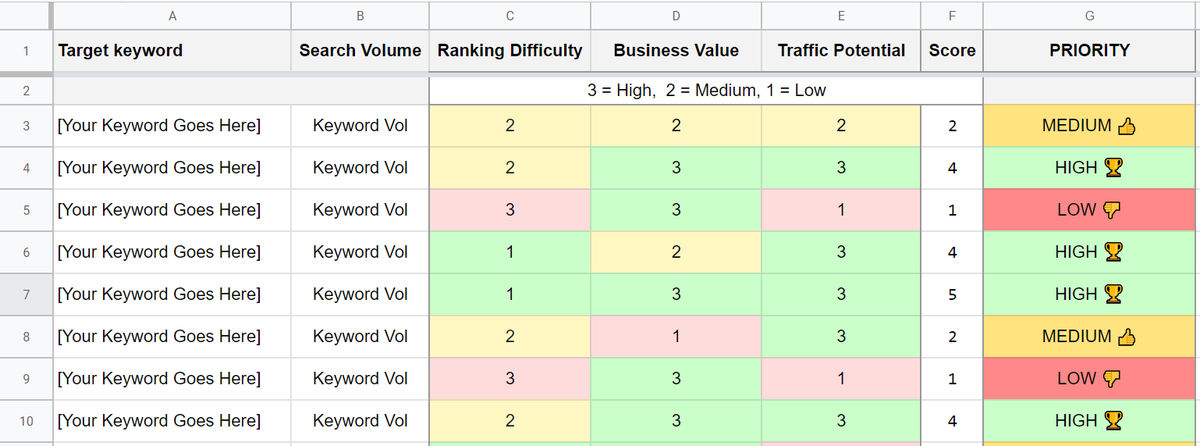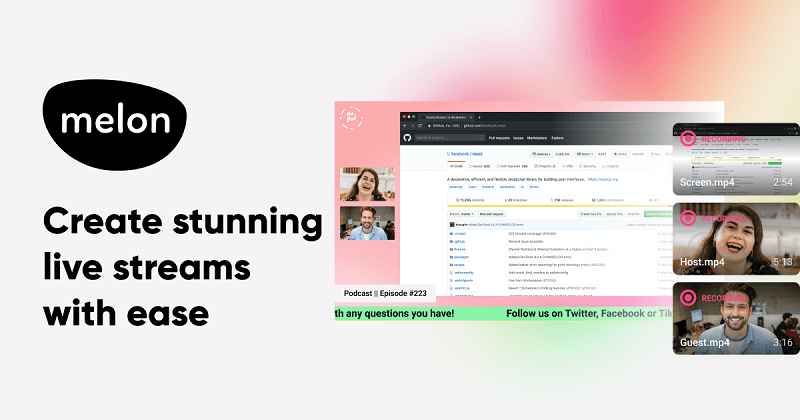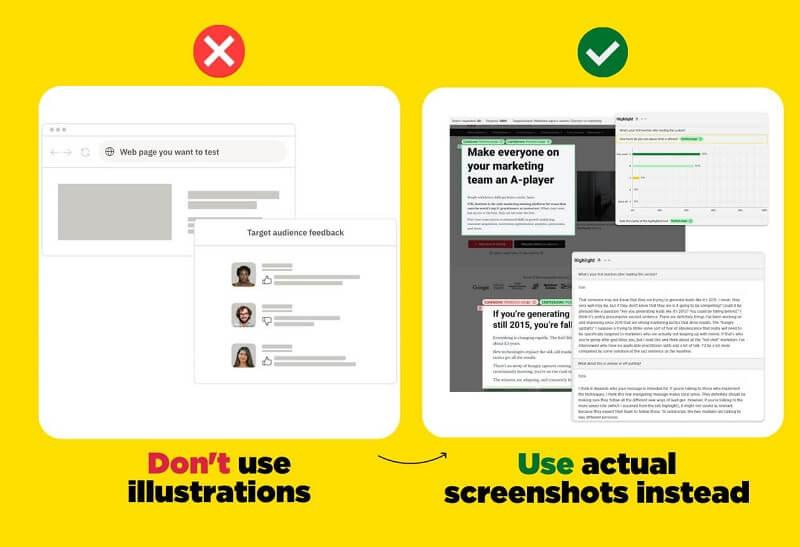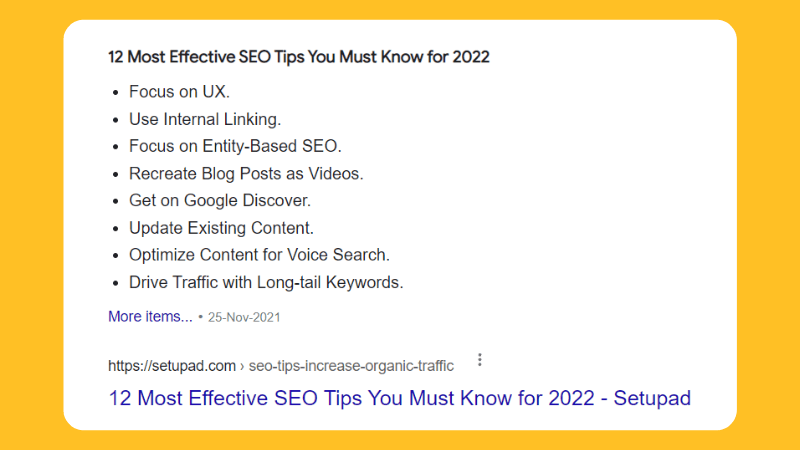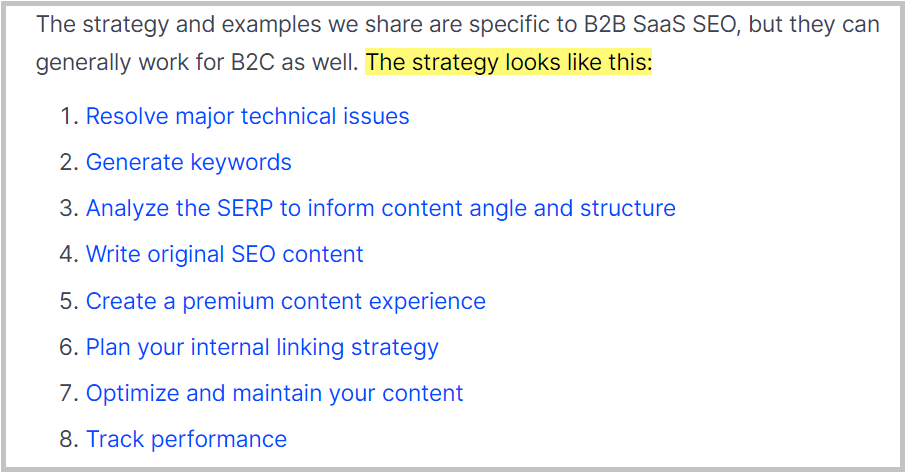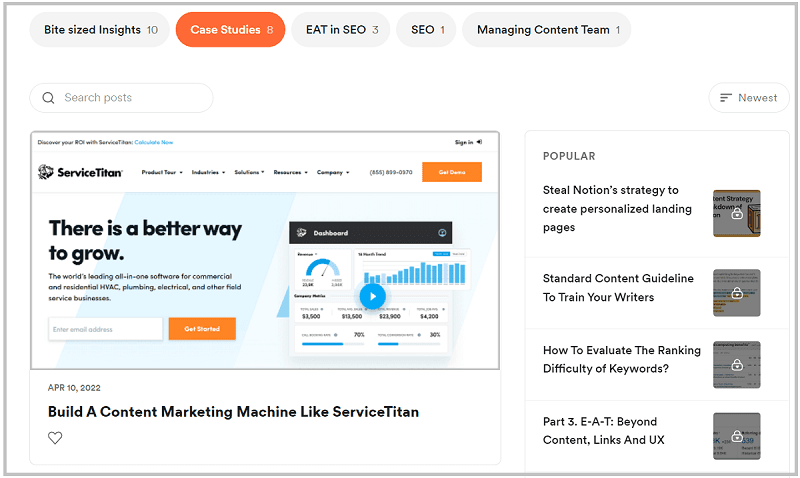#062 Content Marketing Newsletter
Learn SEO framework (+ free template) for faster SEO results, web style writing guide, landing page tip, and much more.
Hey, Rafiqul here. Welcome to Content Marketing VIP, which delivers actionable insights, the latest updates, & free resources every other Monday.
First time here? Read past episodes.
Let’s Get Started →
🎯 Actionable Insights
💡 1. Web Writing Style Guide: What Makes Good Web Writing?
Looking to improve UX writing? Or,
Want to train your content team to write better content for the web?
Look no further!
This writing guideline DukeLibraries is a goldmine full of UX writing insights.
Sharing 8 actionable UX writing tips from the guideline:
Let’s get started.
1/ Give each page a clear and descriptive title
If your page is frequently linked from another place, the page title should match the text link as closely as possible. They should also clearly describe the subject of the page.
2/ Don’t waste space welcoming people to the page
There is no need, and most users ignore any welcome text as a filler.
3/ Write information, not documents
Ask if your web page is too long and whether it should be broken down into separate, linked pages.
4/ Your first paragraph is the most important one
It should be brief, clear, and to the point in order to engage the user. One-sentence paragraphs are encouraged.
5/ Put important information and tasks first
Follow the top-to-bottom hierarchy, saving less important information for last.
6/ Use short paragraphs
Large blocks of text look like walls to the user. Research has shown that short, concise paragraphs and bulleted lists work best for web use.
7/ Just say it
Phrase things in simple, straightforward language, using familiar words and avoiding jargon.
8/ Write meaningful links
Link, link, and link to relevant information. If you mention a faculty member, link to their bio page.
Don’t make people search for something that you mention if it already has a page.
👉 Insights from Duke University Libraries (Highly recommended to read the complete guide)
Liked the content marketing VIP newsletter? If so, please consider sharing this with your friends.
Your referrals help me grow the newsletter :) Thanks in advance.
(Continue reading…)
💡 2. Why and How of Keyword Prioritization For Faster SEO Results
Assume you've got 50 new keywords to target with blog posts (4 new posts/ week).
Common mistake: Picking keywords randomly from the list to publish new pages from week 1.
Better approach?
Keyword prioritization.
Why prioritize keyword lists?
It is obvious that not all keywords from the list have equal:
Business value
Competiton
This is why starting with keywords that have high business value, and low competition will give you the highest ROI for content in the shortest possible time.
Here’s how:
Step 1. Export your keyword list in a Google sheet along with the following data:
Monthly search volume
Traffic potential (from Ahrefs)
Step 2. Add three more columns such as:
Business value
Ranking difficulty
Traffic potential
The sheet will look like this:
Now, you need to score each column manually between 1 to 3.
[3 = High; 2 = Medium; 1 = Low]
Understanding ranking difficulty:
Manually check the SERP & ask the following questions:
How authoritative (quality and quantity of referring domains) are these pages?
Do these pages satisfy the search intent?
Are these websites have topical authority on the topic?
Is there any content quality/depth gap in the top results?
Can I provide unique value and make the content 10x better than what's already there?
Then score each keyword based on the following pattern:
[3 = High Ranking Diff; 2 = Medium Ranking Diff; 1 = Low Ranking Diff]
Likewise, score each keyword for business value:
Keywords that are highly related to the business offerings should be labeled as 3 (High business value).
[3 = High Business value; 2 = Medium Business value; 1 = Low Business value]
Understanding traffic potential (TP):
High traffic potential doesn't always mean very high vol (say 3k+)
For a B2B business, High traffic potential may also stand for 300 monthly SV.
So, traffic potential (TP) depends on your niche.
3 = High TP; 2 = Medium TP; 1 = Low TP
Now, create another column for 'Score.'
Score of any keyword = [{Business value (say 3) + Traffic potential (say 3)} - Ranking difficulty (say 2)] = 4
This way, you can sort your entire keyword list with low difficulty + high business opportunities.
I have created the Google sheet for you that you can copy and start prioritizing keywords right away.
👉 Make a copy of the Google sheet template [From Content Marketing VIP]
[Main sponsor]
💡 Looking for a free tool to create professional live streams or recordings and grow your presence?
Melon App helps you do that in just 5 clicks.
No complicated sign-ups and no downloads are needed for you or guests.
Top features:
Full HD - 1080p camera resolution, streaming output, and screen sharing;
Local Recording - raw recording with exceptional quality for podcasts. Get separate video and audio tracks after the show in full HD
Unlimited streaming to multiple destinations, including custom RTMP connections
Upload your own Overlays, Backgrounds, and Brand Colors
Donations and set alerts
With this Melon App, you can stream for free to YouTube, LinkedIn, Twitter, and other platforms in just 5 clicks (for free).
💬 Bite-sized Insights
💡 1. Why You Shouldn’t Use Random Illustrations To Look Cool
One of the biggest reasons many landing pages suck is the lack of clear communication.
You may have CTAs like subscribe, start a free trial, get a demo, and many more.
But if your users find it difficult to evaluate what using the product is actually like, they’re less likely to convert.
The challenge?
Products with complex features are difficult to explain without using too much text.
Possible solution?
Use product images and screenshots.
“The fastest way to make your website instantly better and communicate more value is to add actual screenshots of your product…
No matter how big a brand is, people still want to see screenshots of how this thing works. What it looks like.” – Wynter.
👉 Insight from Wynter
💡 2. Should You Add Year in Your URLs?
“It makes sense to add the current year to your titles to make your content seem more relevant & up-to-date to potential readers.
BUT don't add the year to your URLs.
Looks weird if it's not the year in the URL anymore and changing the URL is not great either.”
Key takeaway: It’s not a good idea to put YEAR in the URL as you will need to change the URL for every year to make it relevant to the time.
👉 Insight from Dan (Follow him for more SEO tips)
💡 3. How To Build a Mini Media Company as a Solo Founder?
Here are some tips (for solo founders) to build your media company by creating and sharing content:
“Write one article every week (search)
Repurpose it as a post (social)
Send it to your list (email)
Share it in communities (referrals)
Create once and distribute everywhere.”
👉 Insight from Andrea Bosoni (creator of Zerotomarketing.com, a marketing newsletter)
🗓️ Learning Resources and Tools
💡 1. How to execute a modern content-led SEO strategy for B2B SaaS?
This is one of the most comprehensive guides on building and implementing a content-led SEO strategy for your business.
Here is a list of topics covered in this guide:
👉 Explore the Content-led SEO playbook (by Demand Curve)
😄 Have Some Fun
Only SEOs can understand this 😂
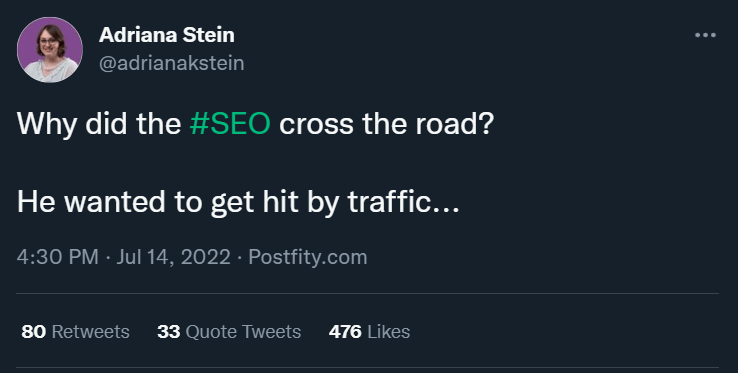
🚀 Learn SEO-Driven Content Marketing With Real Examples [Pre-book now]
Unlock the archive of posts on content marketing and SEO secrets of successful brands like Product Hunt, Shopify, Healthline, and many more that you didn’t even know before.
Get lifetime access to the content hub at $13 if you pre-book now (Only 1 week left).
Sk Rafiqul Islam (Let’s connect on Twitter)




